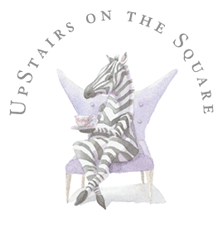We had a cocktail party for Tiffany & Co. not too long ago to celebrate (and sell) some of their new line of jewelry, and as part of the contract we had to serve three "jewel colored" cocktails. When creating a cocktail I usually keep in mind that the appearance of the final product should be a reflection of its taste, and I prefer the honest looking cocktail to the deceiving one. For instance, we stir our gin martinis because they look silky and dangerously clear. A "Jackie O", on the other hand looks composed until you float some champagne on top, when it opens up in a smile. Nothing irritates me more than a cocktail that looks great and disappoints when sipped (anything made with generic green liqueurs and puckers will always taste like chemicals). I certainly didn't feel like irritating people shopping for seven-figure necklaces so I set to work on the perfect balance between jewel color and great flavor.
For pink, I brought back a spring favourite, the Fellini. It has fresh squeezed blood-orange juice, house-made pomegranate liqueur and good old dry Champagne. We served it on a champagne flute, garnished with a rose petal and called it the Pink Diamond.
One down, two to go. Next I went for blue. The reason I did that is because Blue Curacao is a legitimate substitute for triple sec and any orange liqueur based sour is good by me. I used lime juice to balance it and the twist came from apple-flavored vodka (no we didn't make this one here, but we used Citadelle which is a great brand). We served that with a sugared rim and called it the Sapphire Cocktail. So far so good.
The last one was the trickiest one. The bartenders and I had come up with a green drink (emerald ?) but the Tiffany's people wanted something purple. Purple is easy. We carry an excellent Creme de Cassis and I have a new-found respect for Chambord, I can do purple! So I thought. "It needs to be jewel-color" said Mary Catherine examining a cocktail that, I swear, was my best rendition of the color. To make matters worse, Tiffany's was promised a lavender flavored cocktail. That sounds great but I was kind of stuck at the last minute. Along comes Emily, and her genial syrups: from the pastry area on the 3rd floor, came down a syrup that tasted very much of lavender, with a good amount of sweetness and the color was perfect. I had about three minutes to create a drink with that syrup before the menus got printed. For a quick second my eyes rested on a bottle of Luxardo maraschino liqueur and I felt the Jerry Thomas in me, I was struck with inspiration. "Lino, we're printing the menus now". I snapped back. Mr. Thomas, we'll have to try that maraschino, gin and lavender later, for now I played safe: I used vodka for the base, lavender syrup for sweet, lemon juice for sour. Easy as lemonade. We named it the Amethyst cocktail and it was of course the best-seller of the night. When people asked me how I got the color to be so perfect, all I could tell them was that I used a magical syrup that came from upstairs.
